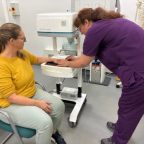
Telemedicine in Veterinary Medicine: Safety, Effectiveness and Popularity
Digital technologies penetrate all spheres of human activities and present both challenges and opportunities. In view of the rising pet population while the number of vet facilities is still flat, veterinary medicine can benefit technologies in terms of profession, professionals and pet owners. In today's article, we’ll elaborate on veterinary telemedicine. Could it be an effective and safe practice when a pet cannot say “I have eaten a ball” or show where it hurts. What are telemedicine adoption rates in veterinary practices? Let’s see.
As you know, telemedicine refers to remote clinical services with the exchange of medical information electronically to improve the patient’s medical condition. And if telemedicine in human health today is no surprise, then “telemedicine in veterinary medicine” might still sound rather futuristic for many pet owners. However, amid the COVID-19 pandemic, remote vet medicine software adoption is slowly growing.
The American Veterinary Medical Association estimates that today, 30 to 35 percent of U.S. veterinary service providers leverage digital technologies like telemedicine. Common use cases include diagnostics, treatments, and enhanced communication between pet owners and veterinarians. In the light of the current pandemic, “many of these visits were for follow-ups and rechecks and taking care of minor acute illnesses or injuries. Specialists also have used telemedicine for recheck visits with their clients and patients. Using telemedicine for curbside visits has also become very popular”, says Lori Teller from Texas A&M College of Veterinary Medicine.
Further to the effectiveness point of veterinary telemedicine, this largely expands access to veterinary medicine as such. Virtual pet medicine is also about continuity of care and improved client experience. Despite this, many veterinarians ask “How can we really benefit from telemedicine?” Coastal Animal Hospital in California was challenged with poor compliance with follow-up visits due to busy schedules of pet owners and unwillingness of the latter to bring their terminally ill pets to hospital. In respect of the same, the veterinary team adopted telemedicine services for postsurgical rechecks and hospice care. “Telemedicine is a pathway to make it easier for clients to adhere to their medical care instructions while allowing the clients to better manage their time,” says the hospital’s founder.
When considering whether to take advantage of telemedicine, veterinary practices should comply with the respective regulations. Thus, in the U.S., a Veterinarian-Client-Patient Relationship (VCPR) is to be established prior to using telemedicine for pet care. In other words, a veterinary physician should have a personal interaction with an animal supported by further timely veterinary appointments. VCPR also assumes the client’s consent to comply with the veterinarian’s instructions, keeping patient records and some other requirements. Without an established VCPR, pet owners may receive general advice and triage only. The lack of the VCPR obliges veterinary practices to refrain from diagnostics, treatment, and prognoses. Although VCPR requirements were alleviated for the time of COVID-19, telemedicine regulations still vary from state to state.
Even though there are clear opportunities in veterinary telemedicine, it still frustrates both clients and service providers. On the one hand, pet owners have no clear understanding how telemedicine can improve their pets’ health status. On the other hand, vendors do not know how to make clients pay for telemedicine, what software to choose and what may be the budget of an ultimate care delivery solution developed from scratch. Like any other pioneers, veterinary practitioners should educate their clients and staff by raising awareness on telemedicine opportunities. Marketing materials, social media promotion, communication, in-hospital demonstrations how telemedicine apps work will create the right bond with pet owners. They will be able to understand what value telemedicine could bring to medical care for their pets.
Conclusion
Telemedicine services should be rendered with professionalism and in line with the same standard of medical care as delivered in person. Veterinarians should educate themselves and pet owners where telemedicine has the capacity to enhance vet care. Only when both veterinary professionals and clients are comfortable with telemedicine format, the latter can be at its best.

















